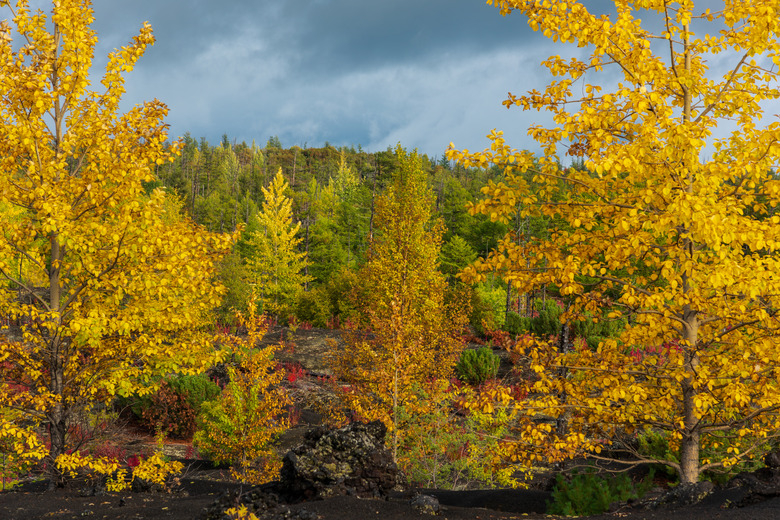Herbivores Of The Taiga
The taiga, or boreal forest as it is sometimes called, covers the northern regions of North America, Asia and Europe. The largest land biome on earth, they are generally located south of tundras and north of deciduous forests. Characteristics of the taiga include an incredibly cold climate, low precipitation and a very short growing season. Some herbivorous animal species that live in the taiga are especially adapted to life in these conditions, while others migrate to warmer climates in the winter.
Rodents and Small Mammals
Rodents and Small Mammals
The taiga is home to many species of herbivorous rodents and other small mammals, including the snowshoe hare and the porcupine. In the summer, these rodents feed on plants and leaves. In the winter, they eat twigs and buds. Some rodents have special adaptations to living in the taiga. Snowshoe hares, for example, have wide back feet covered in thick hair to allow them to move in the snow and protect their feet from the cold. These hares are typically brown in the summertime to blend in with their surroundings. During the winter, they shed their brown hair and grow a thicker coat of white fur so they blend in with the snow.
Insects
Insects
Summertime is an especially prolific time for insects in the taiga. Approximately 32,000 inspect species live in this biome, including various species of ants, mosquitoes, spruce bark beetles and aspen leaf miners. Some of these insect species, such as ants, survive winter by heading underground. They store food throughout the year to sustain them during winter. Other species like the spruce bark beetle and aspen leaf miner live on the forest floor in the winter and emerge from beneath the snow in the spring. This serves as an effective means of population reduction, as not all insects survive until spring.
Birds
Birds
While many birds travel to the taiga in the summertime to take advantage of the surge in insect populations, several species of herbivorous birds also live there. Many finch species call the taiga home, along with larger birds, such as snow geese and Canada geese. Canada geese, like many other geese species, fly south to warmer climates in the winter. Snow geese, on the other hand, remain in the taiga throughout the year.
Larger Mammals
Larger Mammals
Several species of herbivorous large mammals live in the taiga, including white-tailed deer, moose, musk oxen, caribou and reindeer. Many of these species feed on leaves, herbs and plants in the summer months, but need to feed on lichen and moss in the winter due to the shortage of vegetation. These animals typically spend most of the day eating to get the nutrients they need.
Cite This Article
MLA
Powell, Jack. "Herbivores Of The Taiga" sciencing.com, https://www.sciencing.com/herbivores-taiga-8508808/. 22 November 2019.
APA
Powell, Jack. (2019, November 22). Herbivores Of The Taiga. sciencing.com. Retrieved from https://www.sciencing.com/herbivores-taiga-8508808/
Chicago
Powell, Jack. Herbivores Of The Taiga last modified March 24, 2022. https://www.sciencing.com/herbivores-taiga-8508808/
